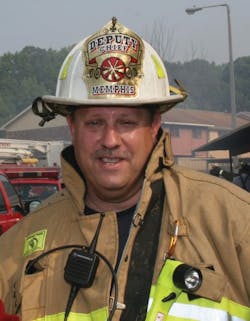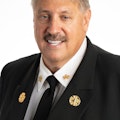It’s 3 o’clock in the morning and the tones go off. “Rescue 8, meet the police at the intersection of Main and 5th streets to check on the welfare of a civilian.”
When you arrive on that location, it is a scene you have seen probably many times from the cab of your ambulance. Two police officers and a civilian who is having trouble standing. He may be stumbling around a bit or leaning against a car, trying to keep his balance. As you exit your ambulance, one of the police officers tells you the man has had too much to drink and he may need to go to a hospital. This is the “ETOH patient,” referring to ethanol, or drinking alcohol.
Common scenario
This scenario plays out every day somewhere in the U.S. and chances are you have been on one of these calls. Ironically, I was in Norway a few years ago and I saw the same situation play out in the main square in Oslo – a patient who appeared to be drunk, two ambulance personnel tending to him and a group of police officers standing around shooting the breeze while the medics went through their assessment. My thought was that I could have closed my eyes and been anywhere in the U.S. and witnessed the same event.
Here’s the scenario: Police are called for a “person down” or a “person acting unusual.” When officers arrive, they find a person who is intoxicated. The police cannot let the person drive, and he or she usually is too intoxicated to be allowed to remain on the street. Many times, the police do not want to take them to jail and spend hours processing paperwork for a charge of public intoxication, so they do what for the police is the next best thing – they call the fire department to have the person transported to a hospital. Usually, the person will admit to drinking only a little. Some call this the JACOB syndrome – JACOB standing for “Just A Couple Of Beers.”
Firefighter/paramedics must be aware that intoxication does not necessarily mean that a person is sick, and a hospital emergency department is not necessarily the place for a person who has been drinking alcohol, but can still make a decision on needing or even wanting medical care.
So what are you to do as the firefighter/paramedic in this situation?
First, don’t get caught in the trap that this is “just another drunk.” I’ve seen “just another drunk” die after being left behind. They might not have necessarily died from the alcohol, but they might have had other pre-existing conditions exacerbated by the alcohol or maybe they were exposed to the cold and died from hypothermia.
Most firefighter/paramedics are familiar with the signs of alcohol intoxication. The most recognizable clinical sign is inebriation. People who are mildly inebriated may initially appear euphoric and exhibit diminished fine motor coordination and decreased social inhibition, which can deteriorate to impaired judgment and coordination, agitation, combativeness and altered mental status. People who experience moderate to severe alcohol intoxication usually will have slurred speech, a lack of muscle control and involuntary eye movements. The warm, flushed skin common to alcohol intoxication is the result of peripheral vasodilation and may also lead to symptoms such as a feeling of warmth described by the patient. This vasodilation, as well as fluid loss secondary to vomiting and urination, can result in hypotension and tachycardia.
As intoxication becomes more severe, people will exhibit an unsteady gait and impaired balance. Since alcohol is a central nervous system depressant, the person can become becoming increasingly lethargic and may have difficulty sitting upright without assistance. As intoxication increases, coma will develop and respiratory depression can lead to respiratory failure. Also, some people mix alcohol with drugs. All of this should be taken into consideration when examining someone who appears to have drunk too much.
It has been my experience that most intoxicated people will decline transport to a hospital and usually just want to go home, but not so fast! The best way to determine whether people can refuse care is to put them through an examination to determine their level of competency. If they can pass your examination on their ability to make rational and competent decisions, they can be free to refuse care. If not, you need to consider transporting them to a hospital.
There is no magic shot that you can give the person suffering from acute alcohol intoxication to reverse the effect. Your main role is mainly supportive in nature while the alcohol is metabolized in the person’s body. They should be treated just like any other person who has a decreased level of consciousness including supporting the airway.
It has been my experience that a good portion of people who have consumed excessive alcohol can be violent and combative. Your safety is obviously a priority and you may need to have a police officer accompany you to the hospital or restrain the patient using soft restraints.
Don’t forget that anyone with an altered or decreased mental status should have their glucose levels checked. A low reading should result in the administration of 50% dextrose.
It is important that you follow your medical protocols when treating suspected alcohol intoxication. Not every intoxicated patient is “just a drunk.” Don’t become complacent.
For more news and training on EMS, visit http://EMSWorld.com/.
GARY LUDWIG, a Firehouse® contributing editor, has 35 years of fire, rescue and EMS experience. He currently serves as a deputy fire chief for the Memphis, TN, Fire Department. Ludwig is also chair of the EMS Section for the International Association of Fire Chiefs. He can be reached through his website at garyludwig.com.
About the Author
Gary Ludwig
GARY LUDWIG has served in three fire departments over his career: St. Louis, Memphis, and Champaign, IL. His fire, EMS and rescue career spanned a total of 46 years, and he has been a paramedic for over 44 years. Ludwig served as president of the International Association of Fire Chiefs in 2019-20. He has a Master’s degree in Business and Management, has written over 500 articles for professional fire and EMS publications and is the author of seven books.
Connect with Gary
Email: [email protected]
Facebook: Gary Ludwig
Twitter: @ChiefGaryLudwig
Website: garyludwig.com

